What Makes the Ferrari F40 the Most Unfiltered Supercar Ever Built
Explore why Ferrari F40 remains the last truly uncompromising supercar. Engineering brilliance, raw driving experience, collector investment - this car embodies them all.

On a sunny July day in 1987, inside Maranello's Civic Centre, Enzo Ferrari - wearing his trademark dark glasses in what would be his final public appearance - prepares to unveil something extraordinary. During that time, the automotive world was changing rapidly. Porsche had just stunned everyone with their computer-controlled 959, Lamborghini was developing the angular Countach successor, and car manufacturers everywhere were adding electronic systems to their new models.
When the red sheet fell away a new Ferrari was revealed. Surprisingly, this car was not following the trend. Sharp-edged, menacing, and utterly raw, the Ferrari F40 was conceived to celebrate the company's 40th anniversary, but also to make a defiant statement that mechanical purity still mattered in an increasingly sanitized world.
The F40 was Enzo Ferrari's final manifesto, the last car personally approved by Il Commendatore himself. And unlike every other supercar emerging from the late 1980s technology arms race, the F40 took a radically different path: strip away the unnecessary, amplify the essential, and create something that would make drivers feel genuinely alive (or absolutely terrified!)
Born of Purpose
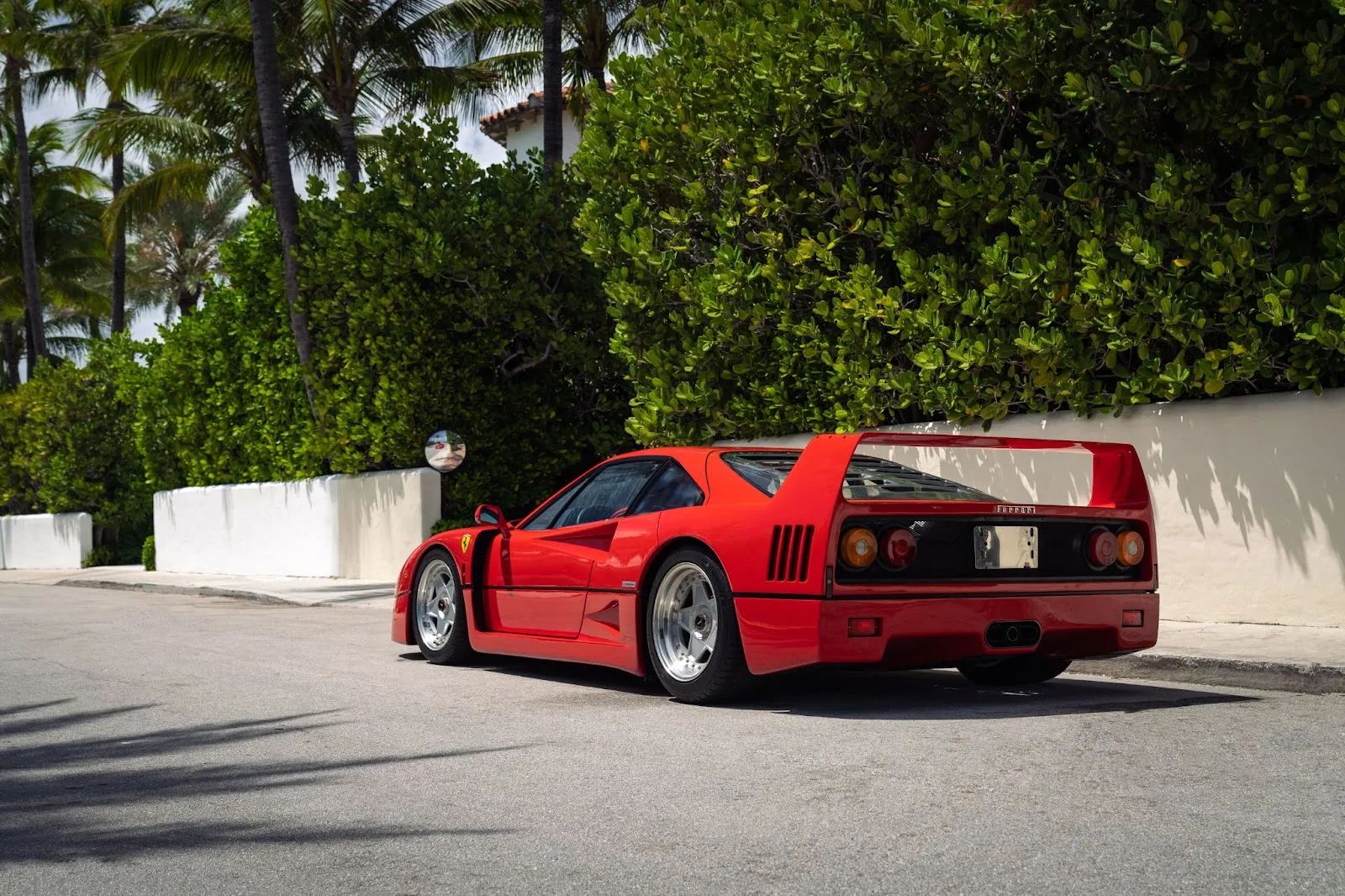
The F40's story begins with brilliant improvisation. In the mid-1980s, motorsport's most extreme category, Group B rallying, was producing spectacular and dangerous cars. Ferrari had developed the 288 GTO partly for the FIA's Group B racing series, creating prototypes that pushed the boundaries of what seemed possible. When the FIA abruptly canceled Group B in 1986 following several fatal accidents, Ferrari found itself with five highly developed 288 GTO Evoluzione prototypes and no racing series to enter.
Other car manufacturers would have written off such an investment. Enzo Ferrari saw an opportunity. "I expressed a wish that we produce a car which could remind us of Le Mans and the GTO," he declared at the F40's launch. Working with engine development genius Nicola Materazzi, Ferrari commissioned a road car that would honor the company's racing heritage.
The timeline was ambitious even by Ferrari standards: it took just thirteen months from project inception in June 1986 to the car’s unveiling. Enzo Ferrari, then 88 years old and battling a disease, gave Materazzi a lot of freedom to handpick his team and work without corporate interference. The brief was elegantly simple: create the fastest, most focused road car possible.
What emerged would become the automotive equivalent of a samurai sword: elegant, purposeful, and highly effective in skilled hands.
Engineering Masterpiece
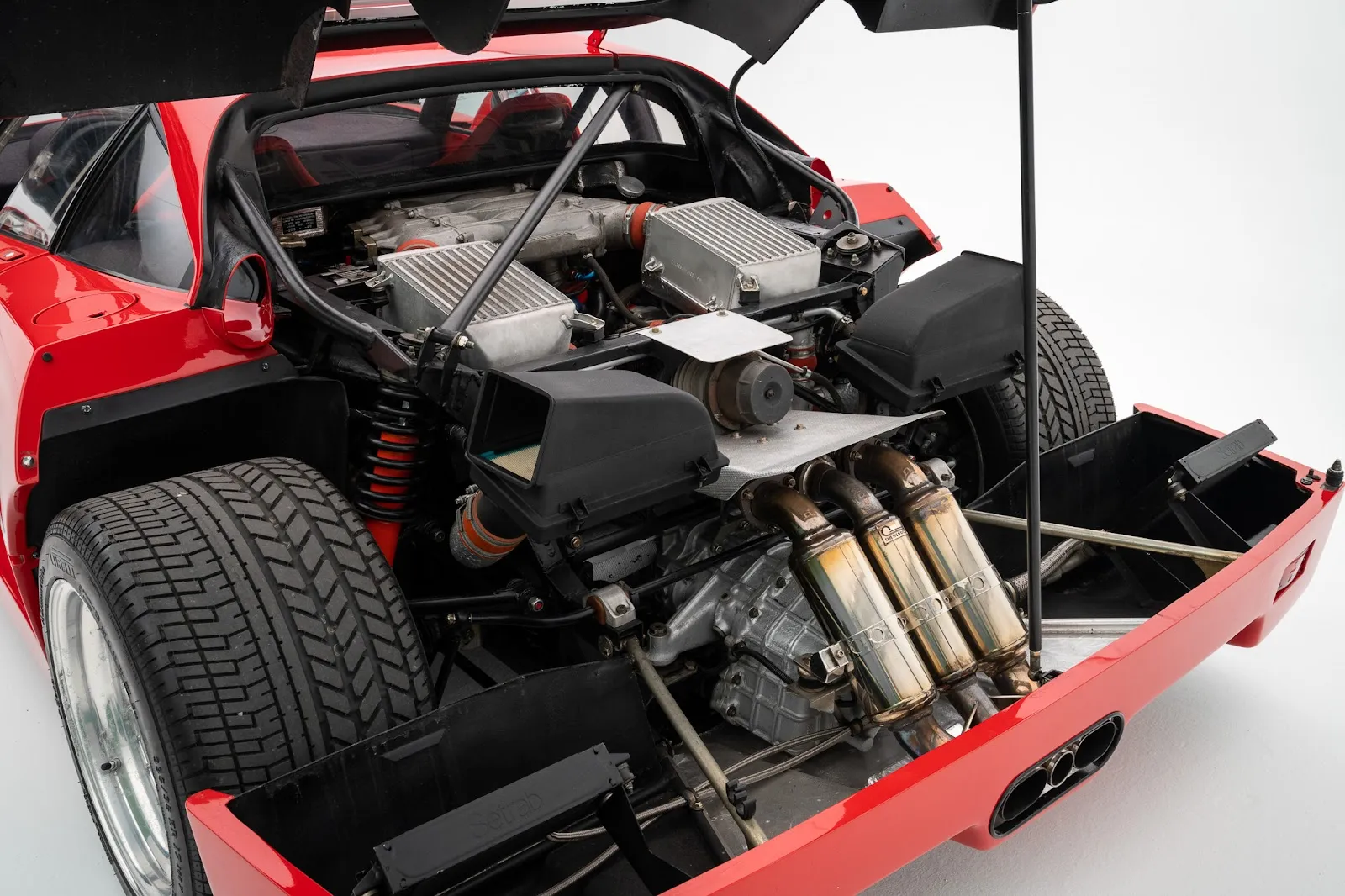
Any Ferrari’s soul can be found in its engine bay, and the Ferrari F40 engine represents a masterclass in controlled violence. The 2.9-liter twin-turbocharged V8 unleashes power with an intensity that transforms driving from transportation into a memorable experience.
Official Ferrari F40 specs list 478 horsepower at 7,000 rpm and 426 lb-ft of torque at 4,000 rpm, but those numbers barely tell the story. Early non-catalyzed European models actually generated closer to 500 horsepower. Below 3,500 rpm, the F40 felt almost docile, the twin IHI turbochargers sitting quietly. Then boost pressure would build, and suddenly you were wrestling with barely contained fury.
Pink Floyd drummer Nick Mason, whose F40 became legendary for accumulating serious mileage, described the experience: "To drive the F40 really quickly, you need to be pretty good, actually; the way the power comes in, it’s not an easy thing to deal with. But it’s a great car."
The performance figures remain staggering even by today's standards. With a dry weight of just 2,765 pounds in European specification, the F40 achieved a power-to-weight ratio of 433 horsepower per ton. Zero to 60 mph vanished in 4.2 seconds, but more significantly, the F40 became the first production car to breach the 200-mph barrier, achieving a verified top speed of 201 mph.
When the F40 debuted, supercars were massive V12 monsters. The Lamborghini Countach needed a mighty 5.2-liter twelve-cylinder to produce 375 horsepower, while Ferrari's own Testarossa required 4.9 liters and twelve cylinders for 390 horsepower. The F40's relatively compact twin-turbo V8 producing 500 horsepower was revolutionary: it was a proof that forced induction could deliver race car performance in a road-legal package.
The complete technical specification reveals just how advanced the F40 was for its era, combining cutting-edge materials with proven mechanical engineering:
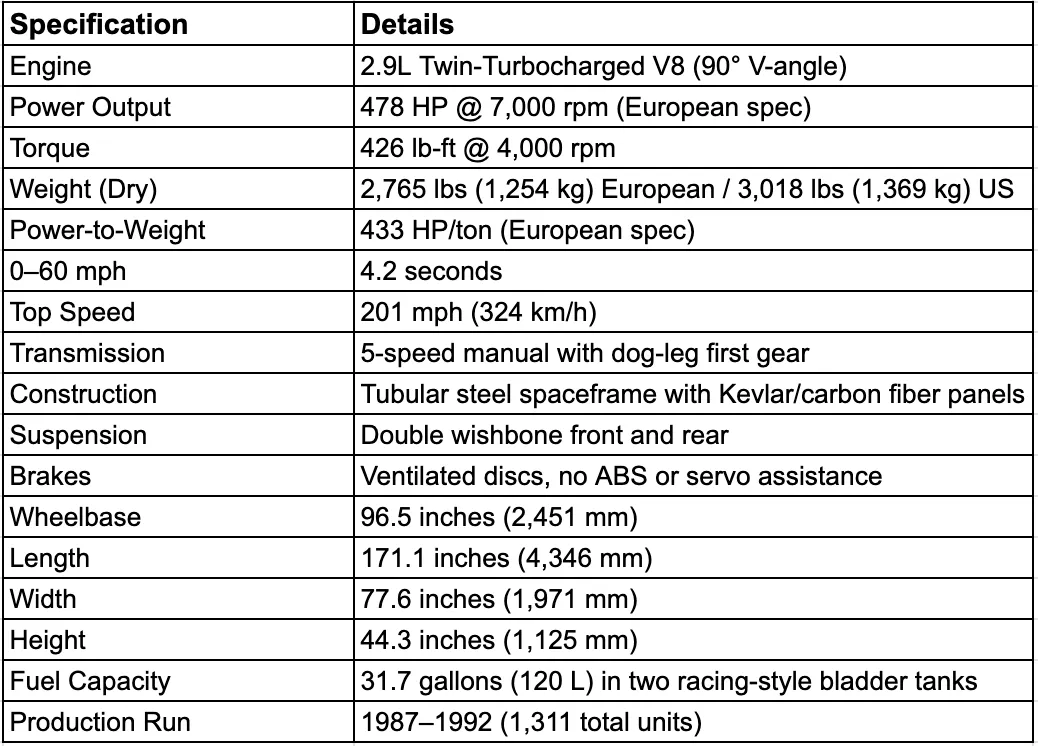
Inside the Cockpit
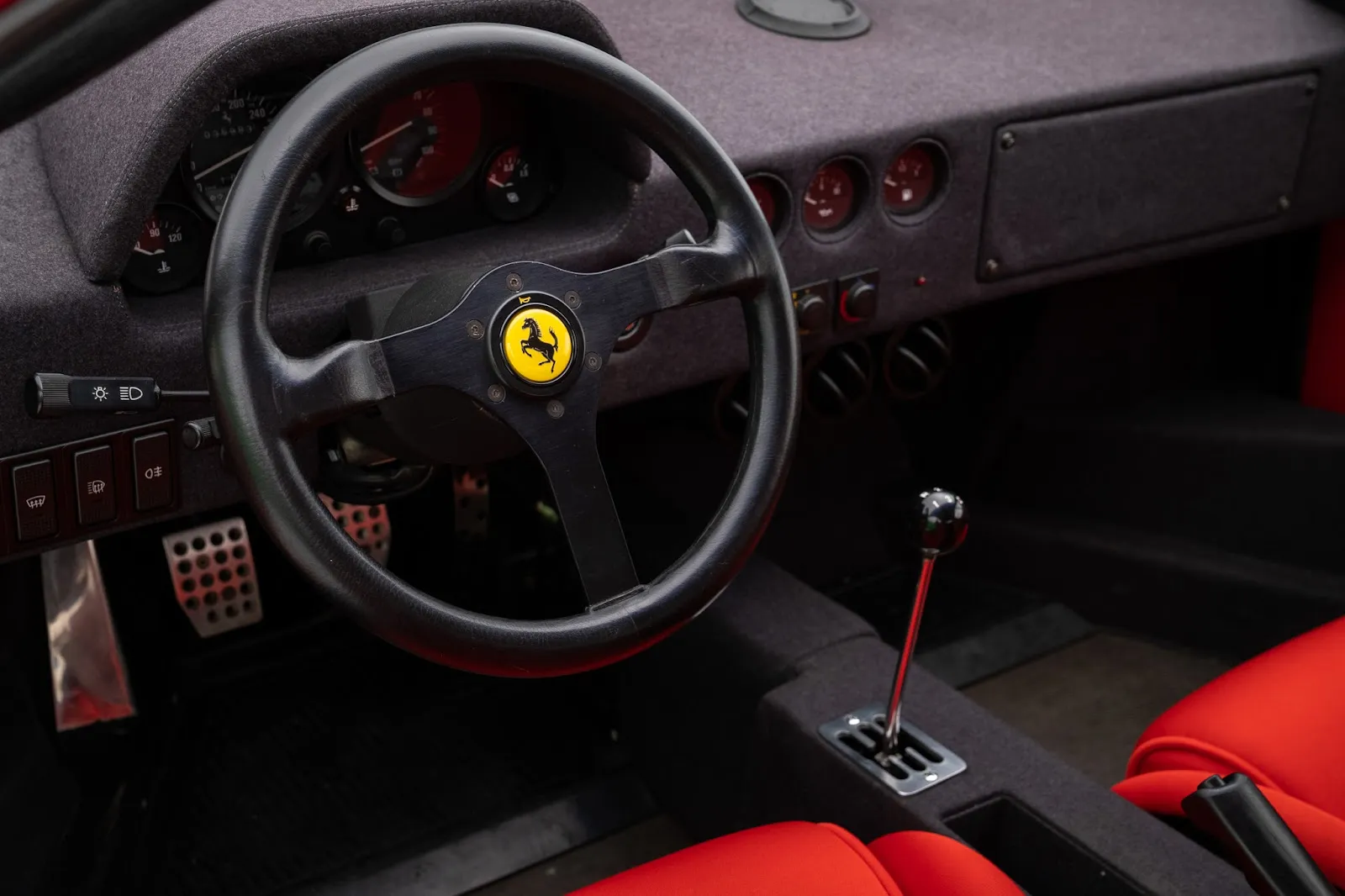
Let’s step through the F40's door (but be careful - there are no handles, just simple release cables) and we immediately understand this car’s priorities. The Ferrari F40 interior strips luxury to its absolute essence. This is what happens when designers obsess over purpose rather than comfort. There's no leather upholstery, no sound system, no glove compartment, and certainly no carpeting to muffle the noise down. The exposed carbon fiber weave serves as a constant reminder that you're sitting inside a racing car.
The seats, available in three widths, can accommodate different body types. Early models featured sliding Lexan windows that belonged on a competition car, though later examples received conventional wind-down windows after customer feedback. Air conditioning was included as a necessity to prevent the engine's tremendous heat from overwhelming the cabin.
Everything inside the car has a purpose. The steering wheel, without airbags or unnecessary padding, transmits every detail of the road surface directly to your hands. The exposed gear gate sprouts from the transmission tunnel and the drilled aluminum pedals remind you constantly of the car's track-focused intentions.
As a Ferrari marketing executive explained: "Customers had been saying our cars were becoming too plush and comfortable. The F40 is for the most enthusiastic of our owners who want nothing but sheer performance."
A Beast to Drive
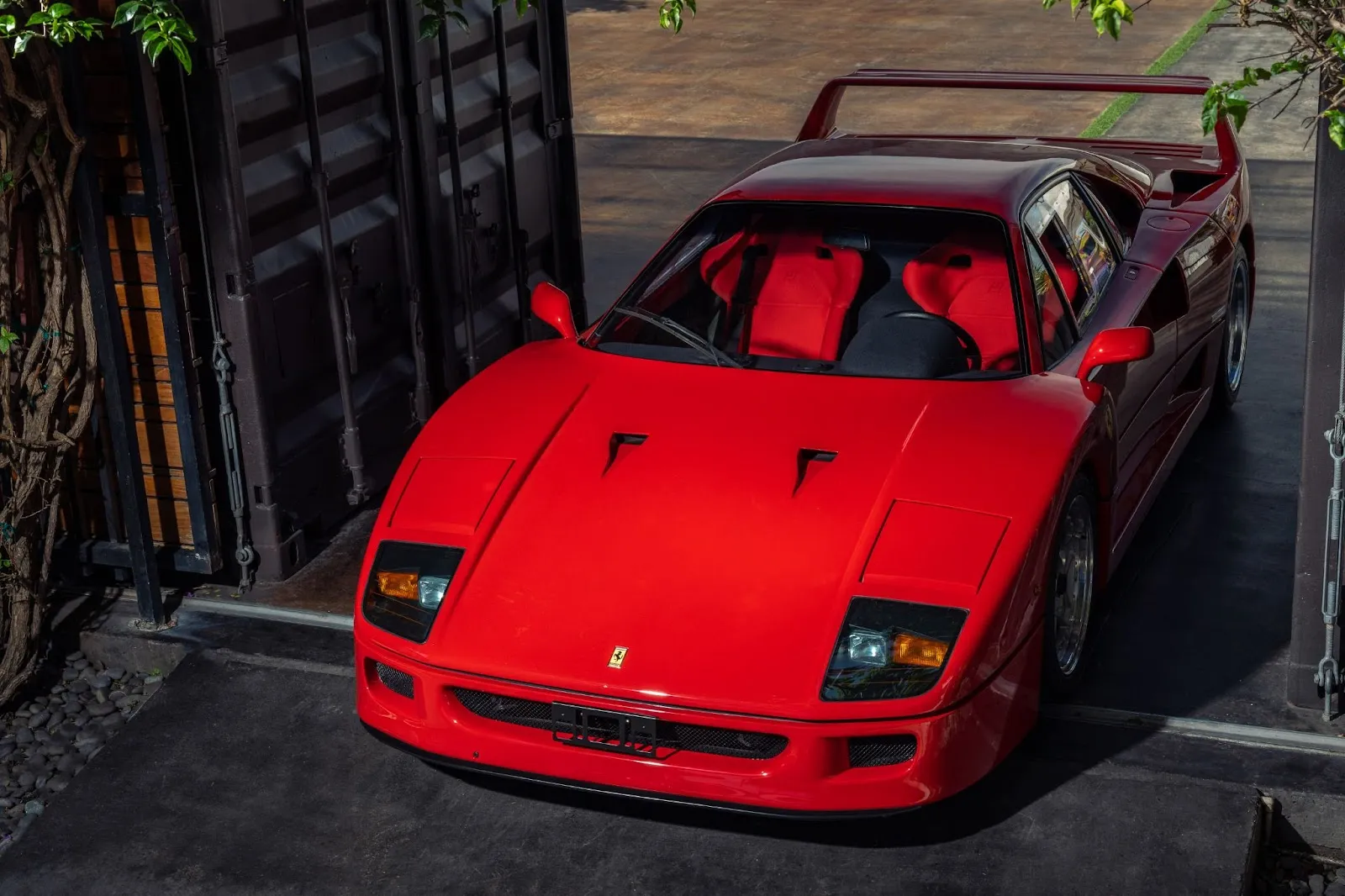
The F40's reputation for being challenging to drive is documented reality. Without traction control, ABS, power steering, or brake assist, the F40 demands respect and rewards skill.
The car's Jekyll and Hyde personality stems from its turbocharged heart. Below 3,500 rpm, it feels almost subdued, the engine note muffled by the turbochargers' restriction. Then boost builds, the wastegates open, and suddenly you're managing an explosion. The transition is violent, immediate, and absolutely intoxicating.
Car and Driver captured this perfectly in 1992: "Just lit off both F40's turbos, in second gear. Was actually bending the steering wheel, trying to hold on, as if atop a tasered bull or a rocket-propelled grenade." The magazine described the experience as a "mix of sheer terror and raw excitement"—accelerating from 15 mph in first gear was "pure fun," while highway driving became an exercise in controlled terror.
Chris Harris offers perhaps the most eloquent description.His verdict: the experience is raw and unfiltered - no driver aids, no AC, just pure adrenaline. You really feel the turbocharged V8’s punch and the car’s light, race‑car chassis.
Understanding the F40's narrow powerband and working with the turbochargers rather than against them is the key to mastering it. Smooth inputs reveal astonishing acceleration, while ham-fisted driving quickly leads to trouble.
But perhaps the most remarkable aspect is how the F40 communicates. The carbon fiber body transmits every road imperfection, the engine bay sends its mechanical symphony directly into the cabin, and the steering wheel provides a direct neural link to the front wheels.
Market Evolution
When production ended in 1992, the F40 had become the most numerous Ferrari supercar ever built, with 1,311 examples versus 272 GTOs or 349 F50s. Among those built, 213 were U.S.-spec, and the rarest subset are the 22 U.S. cars from 1992, which now command a premium.
This relative abundance initially worked against values, with some dismissing it as "too common" to be truly collectible. The market quickly proved those skeptics wrong. Early speculation drove prices to astronomical levels. For example, Nigel Mansell, famous Formula One driver, sold his F40 for £1 million in 1990 (almost $2 million back then.) By the early 2000s, decent examples could be found for well under $1 million, making the F40 accessible to serious enthusiasts.
The modern era has turned things around for the F40. A good US-spec car that traded around $1.2 million in 2014 now commands well over $3 million and more today. European examples have followed similar trajectories, with early non-catalyzed, non-adjustable suspension models leading the charge.
The most valuable F40s today are the ultra-rare racing derivatives. The 19 F40 LM race cars represent the platform's ultimate expression. Even the ten F40 Competizione models, built to customer request with up to 700 horsepower, command seven-figure prices.
What drives these values is the growing recognition that the F40 represents something irreplaceable. Modern safety regulations, emissions requirements, and liability concerns make creating anything similar impossible today.
The F40's Lasting Legacy
When the F40 debuted in 1987, its primary rival was Porsche's technologically sophisticated 959. The two cars represented fundamentally different approaches: the Porsche emphasized computer-controlled systems and all-weather capability, while the Ferrari focused on analog purity and track-focused performance. At the time, road tests often favored the Porsche for its refinement and daily usability, but three decades of hindsight have vindicated Ferrari's approach.
The F40's influence extends far beyond the Maranello racetrack. The combination of lightweight construction, forced induction, and minimalist philosophy would inspire supercars for generations. Modern McLarens, with their carbon fiber tubs and turbocharged engines, trace their DNA directly back to the F40's innovations. Even today's hypercars, despite their hybrid complexity, pay homage to the F40's fundamental principle of maximum performance through minimum weight.
As Ferrari develops what rumors suggest will be the sixth member of their supercar lineage (the alleged F250), the F40's relevance remains profound. If speculation proves correct, the new car could be the first since the F40 to abandon Ferrari's traditional V12, potentially featuring a plug-in hybrid powertrain based on the smaller engine, tracing its heritage back to the F40's revolutionary V8.
From Road to Track
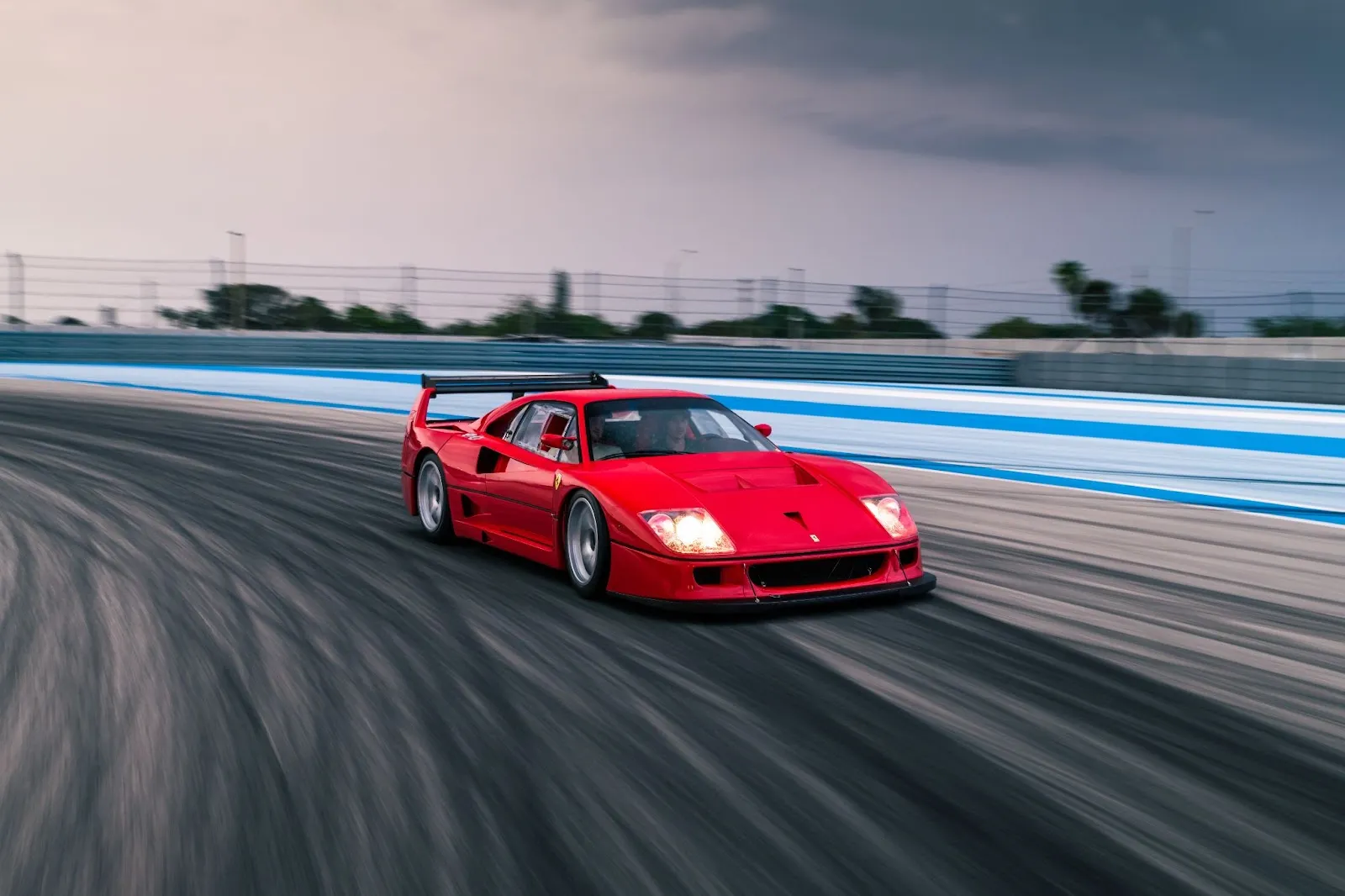
The F40 made its racing debut in October 1989 when Jean Alesi piloted an F40 LM to third place in IMSA's GTO category at Laguna Seca, finishing behind only two factory-backed Audi quattros and ahead of numerous purpose-built racing specials. This debut proved that the F40's road car performance translated directly to track success.
Michelotto, the Ferrari specialist based in Padua, developed the most serious racing versions. Their F40 LM represented the platform's ultimate expression, with increased aerodynamic downforce, stripped interiors, and engine modifications that elevated the basic car's already spectacular performance. Only 19 LMs were produced, but they showcased the road car's ability to compete and resulted in some of the most valuable F40s in existence.
The success continued in the BPR Global GT Series, where F40s claimed victories at prestigious venues like Vallelunga and Anderstorp. Though eventually outpaced by the arrival of the McLaren F1 GTR, the F40's racing career proved that Ferrari's purist approach could succeed against more complex, expensive competitors.
Experiencing Automotive History
More than three decades after its debut, the Ferrari F40 remains one of the most outstanding supercar experiences available to collectors and enthusiasts. The F40 stands as a monument to mechanical honesty, a time capsule from an age when driving skill mattered more than computer controls.
The F40 offers a complete sensory experience. Every drive demands your full attention, rewards your skill, and provides the kind of direct connection between human and machine that has become increasingly rare.
The roaring sound the car makes is hypnotic: the mechanical growl of the flat-plane crank V8 is amplified by the carbon fiber body, which acts as a resonating chamber. The whoosh and chatter of twin turbochargers are amplified by the carbon fiber body.
As one longtime F40 owner perfectly summarized: "There are some very special examples out there. It's a different experience from any other supercar, which has made the F40 one of the true icons from the '80s and '90s."
Now imagine jumping into the F40, grabbing first gear with a solid click. At 3,750 rpm, the turbos come alive—then you just hold on. In that moment, you'd understand why the F40 is probably the last of its kind, a pure expression of automotive passion.
That's exactly what makes it so special, so coveted, and so utterly unforgettable.
About Curated
We, at Curated, specialize in historically significant cars, with a particular passion for rare and vintage supercars. Our team of specialists understands that masterpieces like the Ferrari F40 represent cultural artifacts that embody the pinnacle of engineering achievement and design philosophy from their respective times.
Whether you're seeking to add a legendary supercar to your collection or looking to understand the investment potential of classic automobiles, our curated inventory and expert guidance help serious collectors and enthusiasts find the perfect match. Explore our current selection or contact us to discuss how we can help you locate that specific supercar you've been seeking.



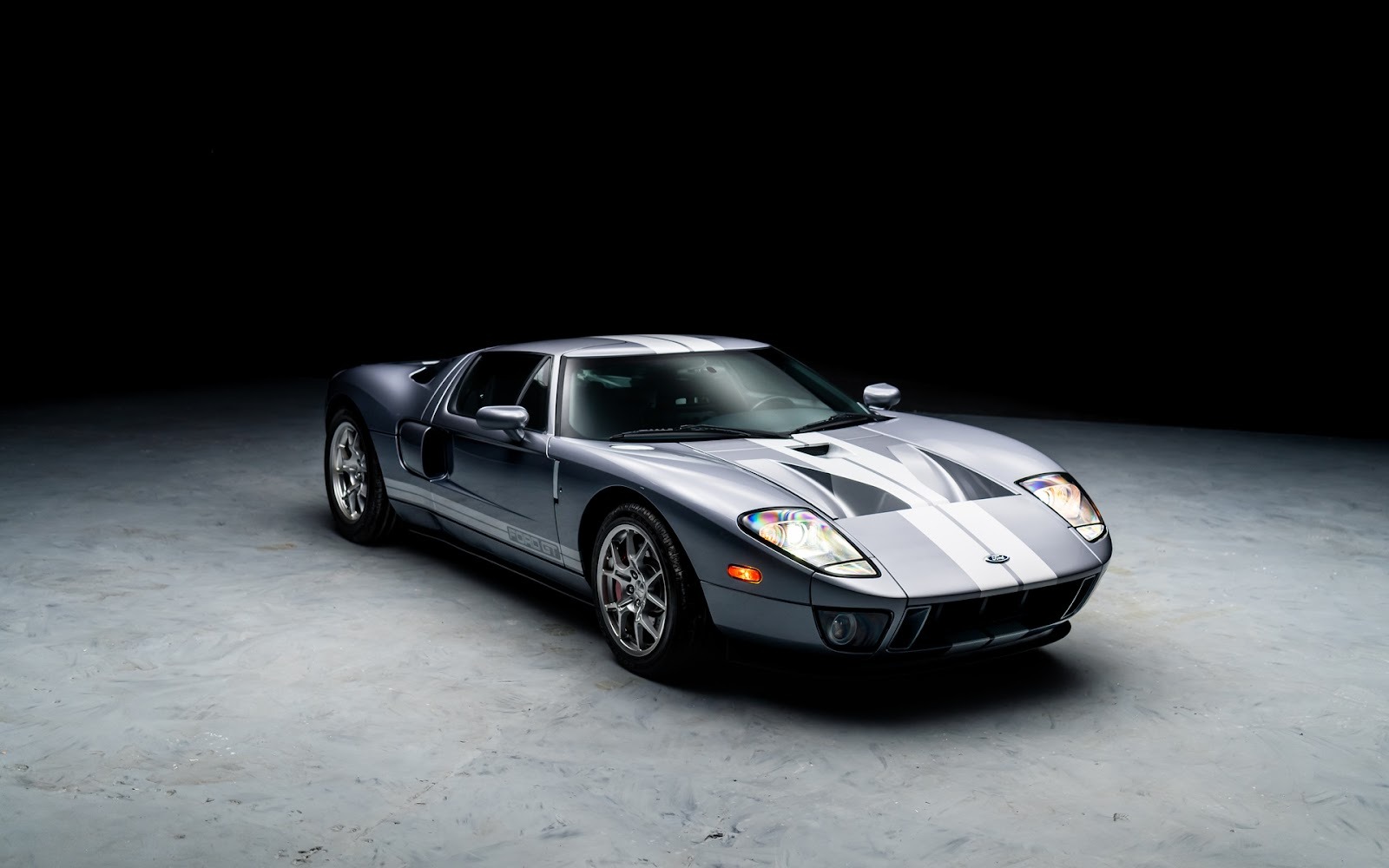
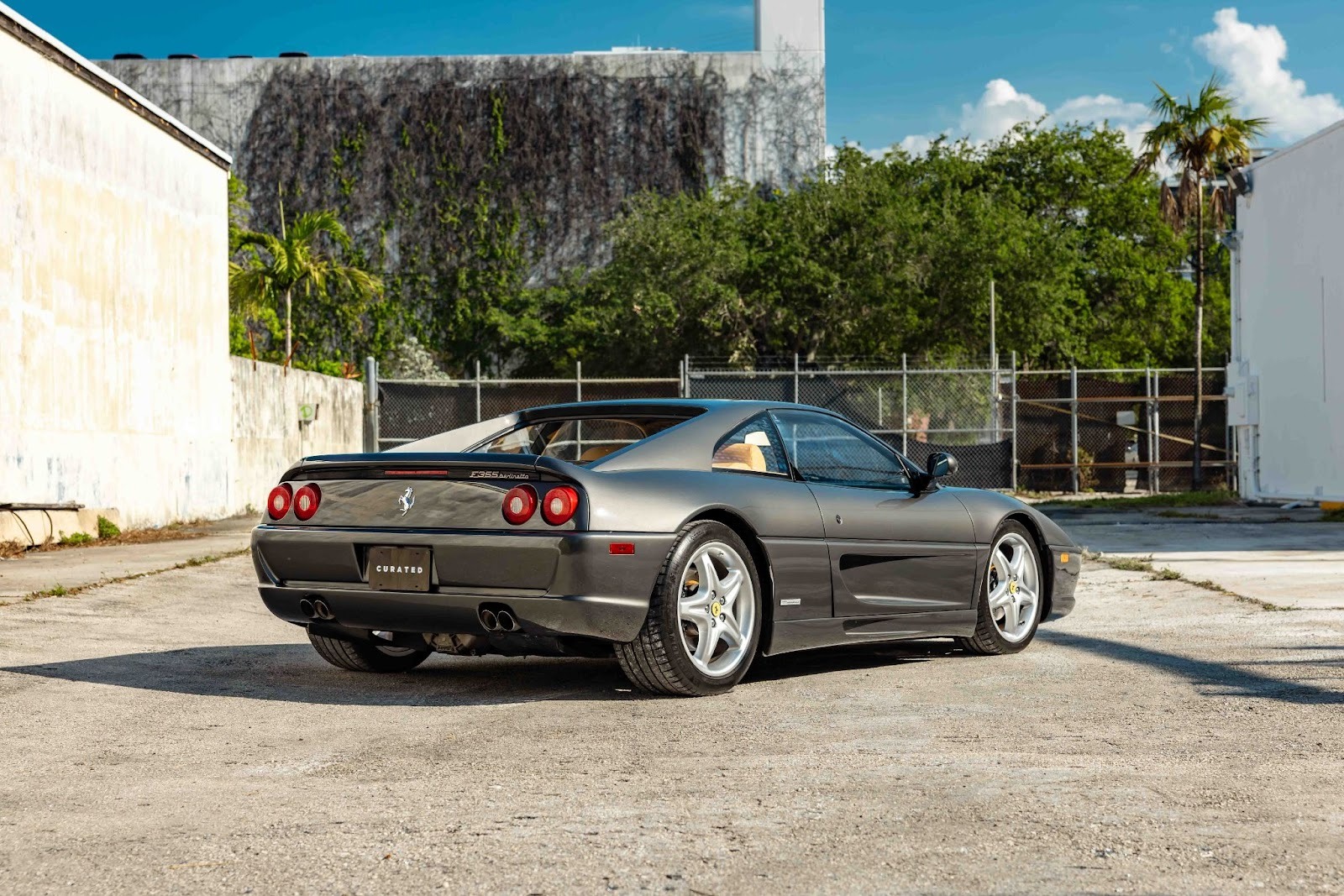
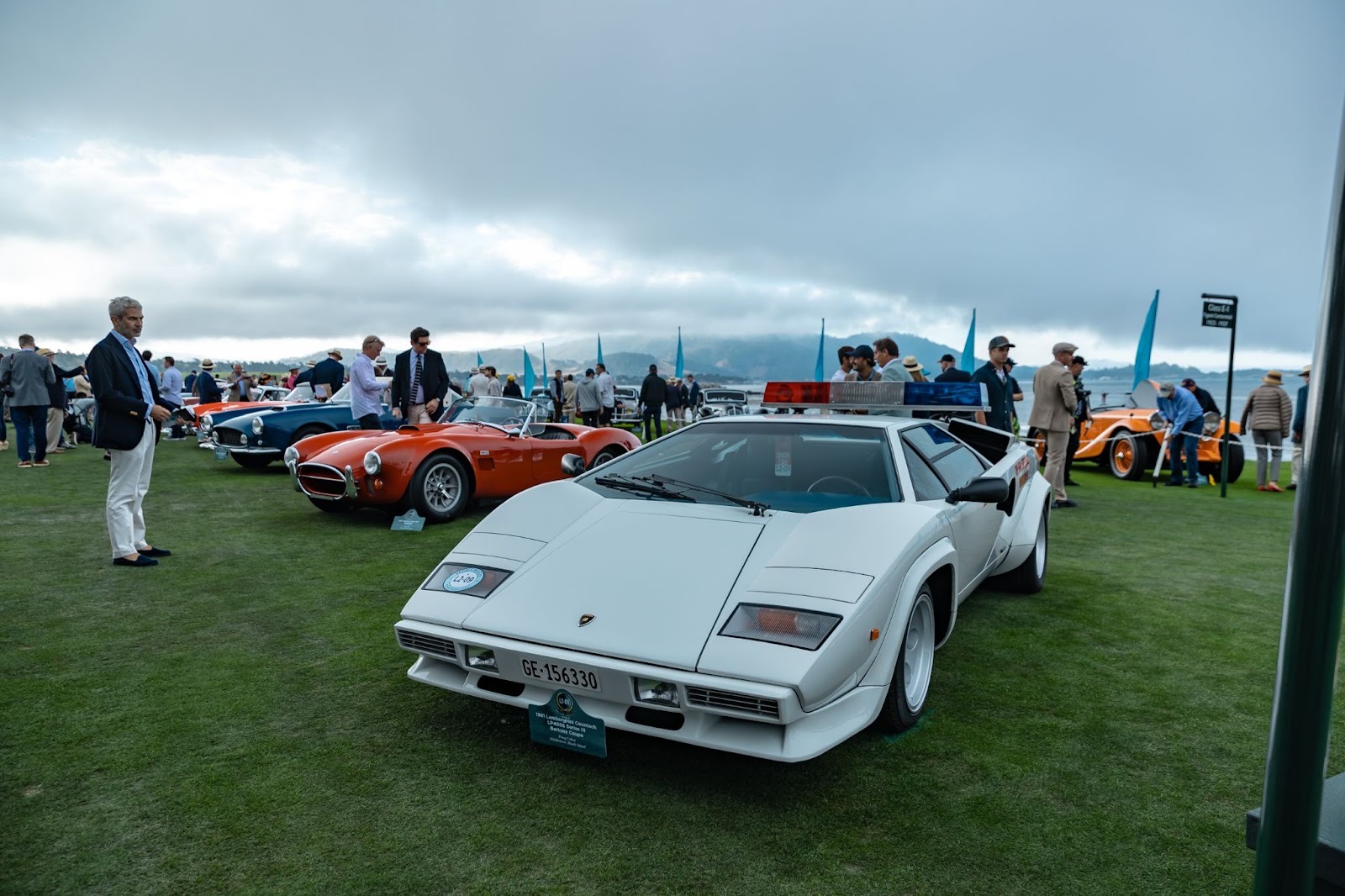









.webp)
